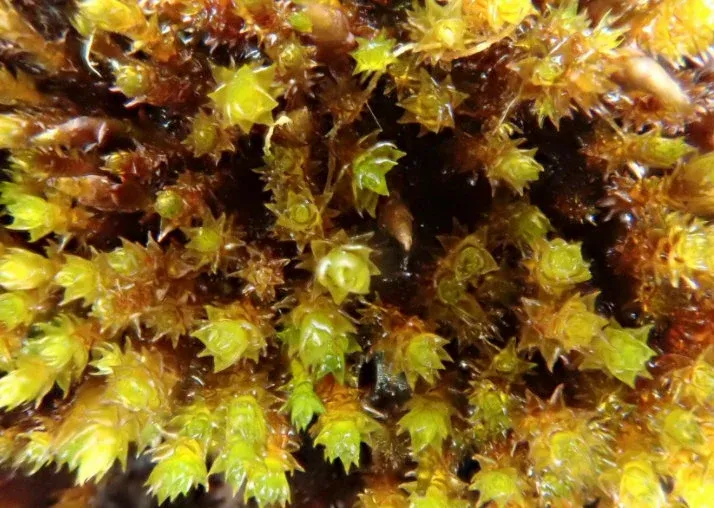
il_fullxfull.3021959034_bzf5.jpg from: https://www.thebryophytanursery.com/listing/989144102/terrarium-red-moss-andreaea-alpina-with
Introduction
In the vast and captivating world of bryophytes, the Andreaea angustifolia Broth. moss stands out as a remarkable member of the Andreaeaceae family. This unassuming yet resilient plant has carved its niche in some of the harshest environments on Earth, thriving where few other organisms dare to tread. Join us on an exciting journey as we delve into the fascinating realm of this extraordinary moss, commonly known as Andreaea.
Background
Before we embark on our exploration of Andreaea angustifolia Broth., it’s essential to understand the broader context in which it exists. Mosses belong to the Bryophyta division, a group of non-vascular plants that play a crucial role in various ecosystems. Within this division, the class Andreaeopsida houses the Andreaeaceae family, which includes our subject of interest, Andreaea angustifolia Broth..
Main Content
Morphology and Identification
Andreaea angustifolia Broth. is a small, acrocarpous moss that forms dense, cushion-like tufts or mats. Its leaves are narrow, linear-lanceolate, and often curved or falcate, giving the plant a distinctive appearance. The angustifolia epithet, derived from the Latin words “angustus” (narrow) and “folium” (leaf), aptly describes its slender foliage.
One of the most remarkable features of this moss is its ability to produce a reddish-brown or blackish pigment, which helps protect it from the harmful effects of ultraviolet radiation. This adaptation is particularly advantageous in the harsh environments where Andreaea thrives.
Global Distribution and Habitat
Andreaea angustifolia Broth. is widely distributed across various regions, including the Arctic, Antarctic, and alpine areas of both hemispheres. It is commonly found growing on rocks, boulders, and exposed surfaces, often in areas with high levels of moisture and low temperatures.
This moss is particularly well-adapted to survive in extreme conditions, such as those found in polar regions, high-altitude mountains, and other inhospitable environments. Its ability to withstand freezing temperatures, desiccation, and intense sunlight makes it a true champion of resilience.
Ecological Roles and Adaptations
Despite its diminutive size, Andreaea angustifolia Broth. plays a vital role in the ecosystems it inhabits. As a pioneer species, it helps stabilize and enrich barren substrates, paving the way for other organisms to establish themselves. Additionally, its dense mats provide shelter and microhabitats for various invertebrates and microorganisms.
One of the most remarkable adaptations of Andreaea is its tolerance to desiccation. During periods of drought, the moss can enter a state of dormancy, reviving itself when moisture becomes available again. This ability to withstand extreme dryness is a testament to its evolutionary prowess and contributes to its success in harsh environments.
Case Studies/Examples
To illustrate the resilience and adaptability of Andreaea angustifolia Broth., let’s consider a case study from the Antarctic region. In the McMurdo Dry Valleys, one of the most arid and inhospitable environments on Earth, this moss thrives on exposed rock surfaces, defying the extreme conditions with its remarkable survival strategies.
Another example can be found in the Arctic regions, where Andreaea forms extensive mats on rocky outcrops and contributes to the overall biodiversity of these fragile ecosystems. Its presence serves as an indicator of environmental health and provides valuable insights into the impacts of climate change on these sensitive areas.
Technical Table
| Characteristic | Description |
|---|---|
| Division | Bryophyta |
| Class | Andreaeopsida |
| Family | Andreaeaceae |
| Genus | Andreaea |
| Species | Andreaea angustifolia Broth. |
| Growth Form | Acrocarpous, cushion-like tufts or mats |
| Leaf Shape | Narrow, linear-lanceolate, often curved or falcate |
| Pigmentation | Reddish-brown or blackish pigment for UV protection |
| Habitat | Rocks, boulders, exposed surfaces in Arctic, Antarctic, and alpine regions |
| Adaptations | Desiccation tolerance, UV radiation resistance, cold tolerance |
Conclusion
Andreaea angustifolia Broth., a true marvel of the bryophyte world, stands as a testament to the incredible resilience and adaptability of life on our planet. This unassuming moss has conquered some of the harshest environments, thriving where few other organisms can survive. Its remarkable ability to withstand extreme conditions, such as freezing temperatures, desiccation, and intense sunlight, is a source of inspiration and a reminder of the wonders that nature holds.
As we bid farewell to this extraordinary moss, we are left with a thought-provoking question: What other secrets and adaptations might be hidden within the vast diversity of bryophytes, waiting to be uncovered and appreciated? The exploration of these fascinating organisms is an ongoing journey, one that promises to reveal new marvels and deepen our understanding of the intricate web of life on our planet.